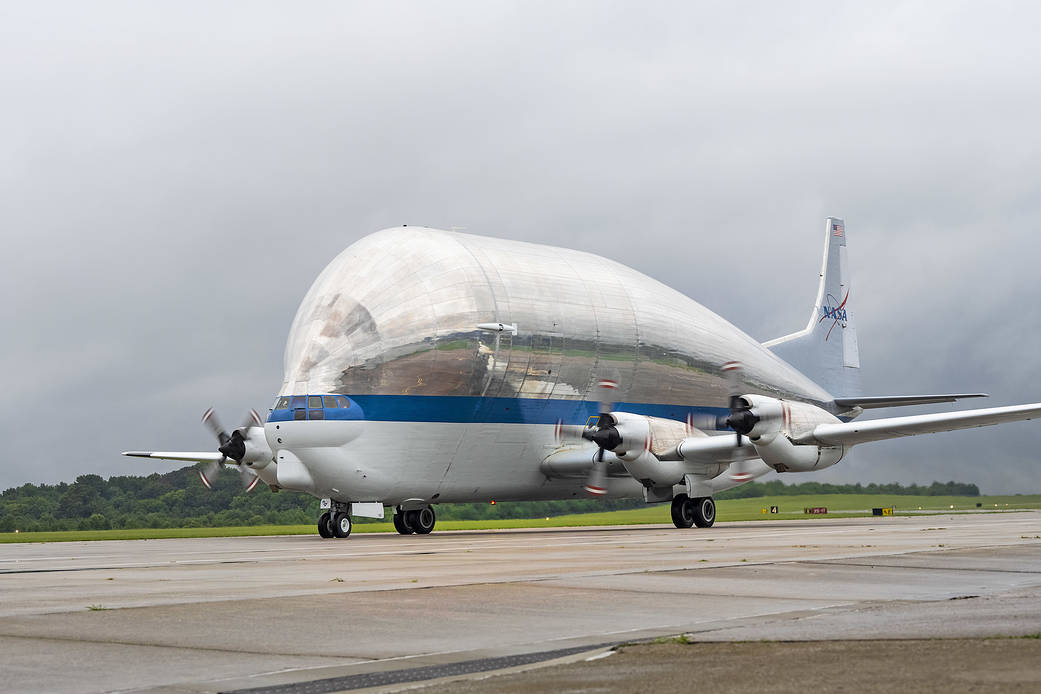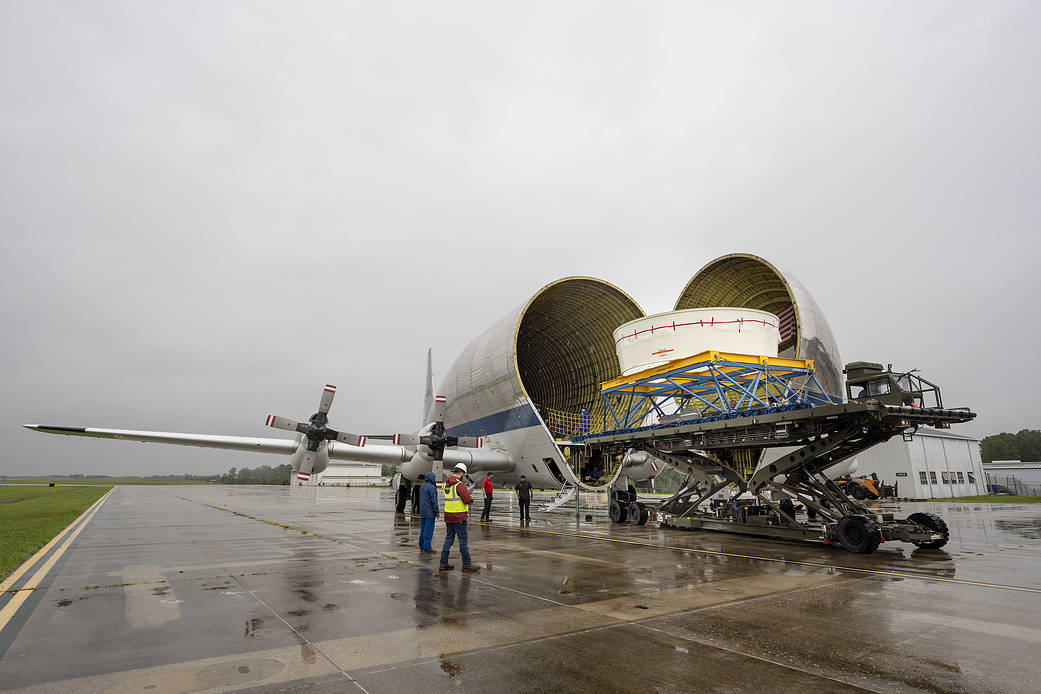Teams at NASA’s Marshall Space Flight Center in Huntsville, Alabama, unloaded the Orion stage adapter (OSA) structural test article from NASA’s Super Guppy cargo airplane Aug. 10.
The Super Guppy is capable of hauling loads of more than 48,000 pounds and boasts a cargo compartment 25 feet tall, 25 feet wide, and 111 feet long. Its unique, hinged nose can open to 110 degrees, allowing NASA teams to load and unload large hardware pieces and other oversized cargo from the front end of the craft.
Engineers at Marshall designed and built the OSA test article to help prepare the agency’s Space Launch System (SLS) rocket for flight. The 5-foot-tall, 18-foot-diameter test article is structurally identical to the flight version of the Orion stage adapter, which connects the rocket’s interim cryogenic propulsion stage to the Orion spacecraft. The test article will be stored at Marshall, where it will continue to serve as an engineering resource.
The flight version of the Orion stage adapter is integrated with the Space Launch System rocket and awaiting its maiden spaceflight during NASA’s Artemis I mission, scheduled to launch no earlier than Aug. 29 The Artemis I OSA will deploy 10 different CubeSats, or small satellites, to conduct various science and technology demonstrations in deep space.
Through Artemis missions, NASA will land the first woman and the first person of color on the Moon, paving the way for a long-term lunar presence and serving as a steppingstone to send astronauts to Mars.
To learn more about NASA’s Space Launch System rocket, visit:
Author: Corinne Edmiston, NASA’s Marshall Space Flight Center, Huntsville, Alabama



































